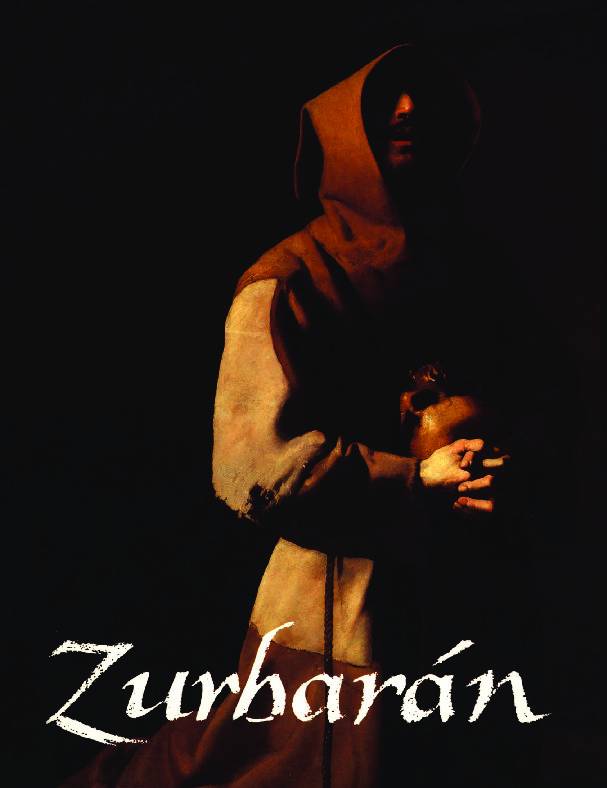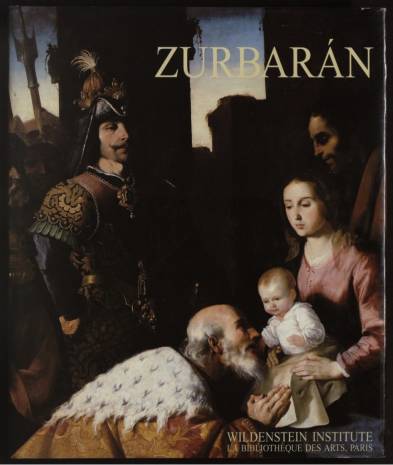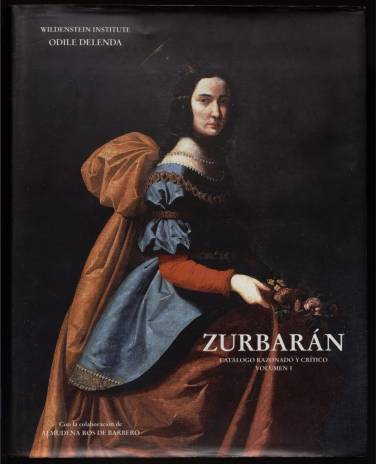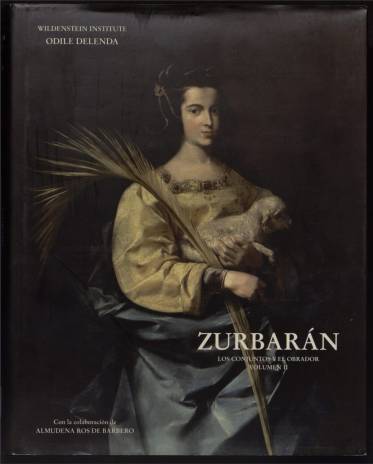ISBN: 9780300203325
Francisco de Zurbarán.
ISBN: 9780300203325
Francisco de Zurbarán.
Francisco de Zurbarán (1598–1664) was, after Velázquez, the greatest painter of the Golden Age in Spain. He may also be considered the most representative artist of the period, since he did not, like Velázquez, work at the court in Madrid, but for ecclesiastical―primarily monastic―patrons in southern Spain.
Born in the small farming town of Fuente de Cantos in Extremadura, Zurbarán established a workshop in Llerena, some sixty miles to the north. Several pictures he painted for Sevillian monasteries brought him early recognition and an unprecedented invitation from the city government to live in Seville, which "would be honored ... and favor him ... since the art of painting is one of the major embellishments of the state."
Zurbarán's clientele, though restricted, was nevertheless representative of seventeenth-century Spain; his approach to spiritual subjects reflects the authority of tradition, the demands of doctrine, and the requirements of patrons and of a public for whom the story, not the style, was the essence of a work of art. The synthesis of tradition and innovation in Zurbarán's art, of forms that are at once timeless and tangible, perfectly expresses the spirit of Counter-Reformation theology and of contemporary Spanish society, with its faith in both mystical and earthly reality.
Seventy-one paintings constitute the monographic exhibition―the first ever to be held in the United States―organized by The Metropolitan Museum of Art, New York, and the Réunion des Musées Nationaux de France, for which this volume serves as the catalogue. Zurbarán's work for monasteries is especially well represented in the exhibition, which includes many works that are rarely seen, as well as those that have made Zurbarán's name preeminent among painters. The magnificent Christ on the Cross, from The Art Institute of Chicago; Saint Serapion, from the Wadsworth Atheneum in Hartford; Saint Peter Nolasco's Vision of the Crucified Saint Peter, from the Museo del Prado, Madrid; the Virgin and Christ in the House of Nazareth, from The Cleveland Museum of Art; and Saint Francis in Meditation, from London's National Gallery, are only some of the masterpieces that have been brought together for this event. The monumental altarpiece of Jerez de la Frontera, which was completely dismantled around 1835, is reconstructed with four imposing pictures lent by museums in France, Spain, and the United States.
By 1700, Zurbarán's work was already unfamiliar to collectors and the general public because most of it was isolated in churches and monasteries. These sites were looted by Napoleon's generals in the Peninsular Wars of 1808–14, which, with the secularization of ecclesiastical property in 1835, made Zurbarán's paintings better known, but robbed them of their original context and much of their meaning.
We see them here, gathered from collections in Europe, Latin America, the United States, and the Soviet Union, in a selection made by the eminent authority on Zurbarán, Jeannine Baticle, Conservateur en Chef Honoraire at the Musée du Louvre, Paris. Essays by distinguished scholars provide background information and historical perspective on the artist. Jonathan Brown, Professor at the Institute of Fine Arts, New York University, writes about Zurbarán's ecclesiastical patrons and the specific commissions that determined the artist's subjects and the religious imagery in his work. Yves Bottineau, Inspecteur Général des Musées Chargé du Musée National des Chateaux de Versailles et de Trianon, discusses the critical reception of the artist from the early nineteenth through the twentieth century. Alfonso E. Perez Sanchez, Director of the Museo del Prado, Madrid, surveys the artists who contributed to the artiistic climate in Seville prior to Zurbarán's emergence as a major figure on the scene. Finally, Jeannine Baticle presents a chronological review of Zurbarán's life based on surviving documents. [This book was originally published in 1988 and has gone out of print. This edition is a print-on-demand version of the original book.]
Metropolitan Museum of Art









